Quick question:
What was diagnostic parasitologist Lauren Camp of the UC Davis Veterinary Medical Teaching Hospital wearing on her head as she talked about the nematode collection last Saturday at the seventh annual UC Davis Biodiversity Museum Day?
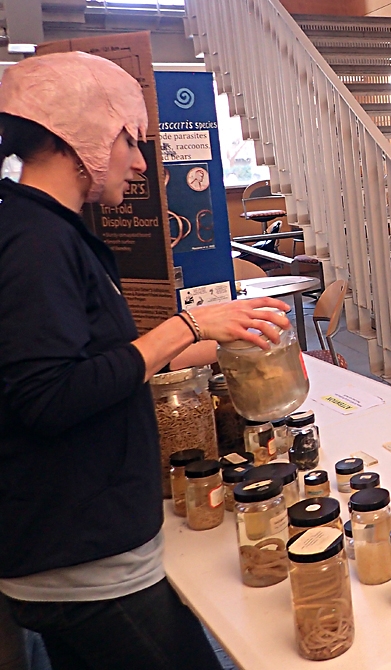
“The hookworm in that image is a parasite of dogs,” explained Camp, who received her doctorate in entomology in 2016 from UC Davis, studying with major professor Steve Nadler, chair of the Department of Entomology and Nematology. “This nematode lives in the small intestine of dogs, and is pretty small, at around 14-16 mm. Dogs can have no symptoms from this parasite, but the parasite can be fatal in some cases. Some of the hookworm samples I showed on Saturday were red because hookworms eat blood from their hosts in addition to eating the intestinal lining. Importantly, Ivana Li made the hat for me using papier mache!”
That would be entomologist Ivana Li, a UC Davis biology lab manager who received her bachelor's degree in entomology from UC Davis in 2013.
Among nematologists staffing the collection, displayed from 1 to 4 p.m. in the Sciences Laboratory Building, were graduate students Corwin Parker and Chris Pagan, who study with major professor Steve Nadler.
Camp, who hails from rural northern Indiana, first became interested in parasites as an undergraduate student at the University of Chicago, where she received her bachelor's degree in biology in 2005. She went on to earn her master's degree in biology from Wake Forest University in 2007 and her doctorate from UC Davis in December 2017. Her doctoral research focused on the genetic characterization of raccoon roundworm, a zoonotic nematode, in North America.
Camp joined the Clinical Diagnostic Laboratories Parasitology Lab in August 2017. Her responsibilities include looking through feces to find and identify parasites. “Many of these parasites are nematodes,” she points out.
"My specific interest in nematode parasites developed when I read some of Dr. Nadler's work on the evolutionary relationships of nematodes for an invertebrate biology class," she related.
Nematologists are accustomed to answering "What's a nematode?"
In one word, "worms."
“Nematodes are an amazing phylum of organisms--they exist in almost every known environment on the planet, and different species eat everything from bacteria and fungi to plant and animal tissue," Camp told us back in 2017, prior to setting up a display at the Bohart Museum of Entomology open house on Parasite Palooza. "I find parasites particularly fascinating, because they are dependent on another organism (or organisms) for part or all of their life cycle."
Camp appeared Sunday, Jan. 22, 2017 on Good Day Sacramento's "Parasite Palooza" show with entomologist Jeff Smith, curator of the moth and butterfly specimens at the Bohart Museum of Entomology. They shared and showed specimens and live insects. Camp mentioned a 30-foot-long whale nematode. (See http://gooddaysacramento.cbslocal.com/video/category/spoken-word-good-day/3610653-parasite-palooza/). Her public service activities also include speaking to Capital Public Radio. (See http://www.capradio.org/88726.)
Attached Images:
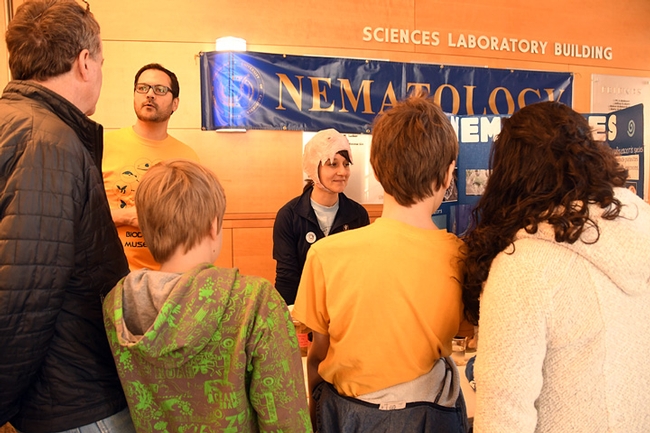
UC Davis diagnostic parasitologist Lauren Camp wears a papier mache nematode hat, modeled after a hookworm mouth. At left is nematologist Chris Pagan, a graduate student in entomology. (Photo by Kathy Keatley Garvey)
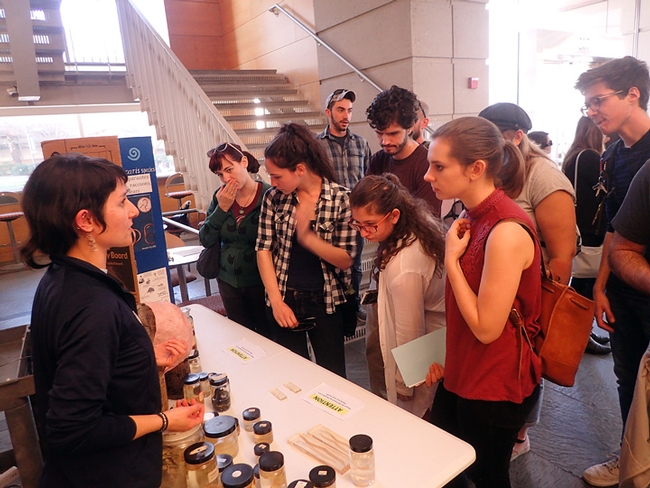
Visitors expressed awe and wonder at the nematode collection during the UC Davis Biodiversity Museum Day. At left, staffing the table, is UC Davis diagnostic parasitologist Lauren Camp, who received her doctorate from UC Davis. (Photo by Kathy Keatley Garvey)
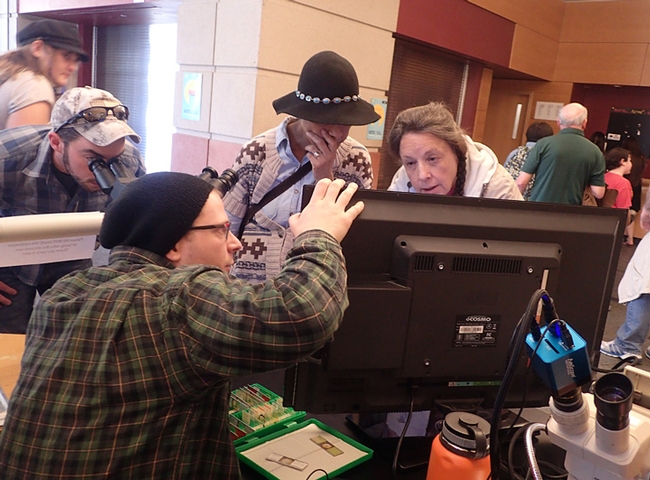
Nematologist and graduate student Corwin Parker talks about nematodes to visitors. (Photo by Kathy Keatley Garvey)
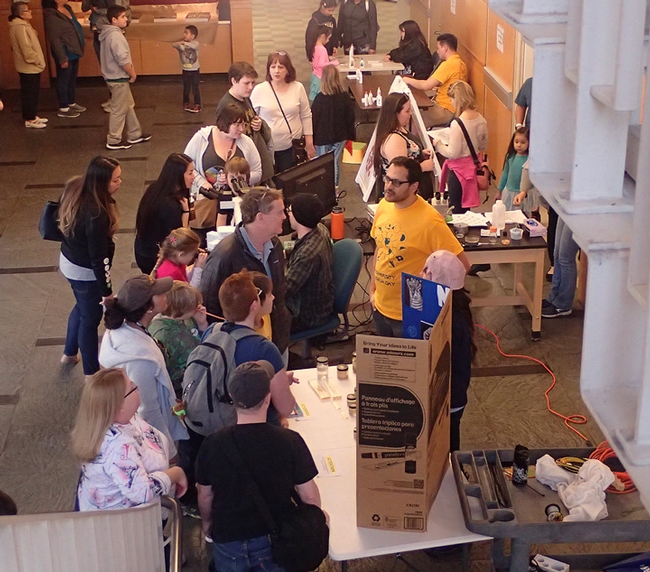
Bird's eye view of the nematode collection and nematologists staffing the display in the Sciences Laboratory Building. (Photo by Kathy Keatley Garvey)